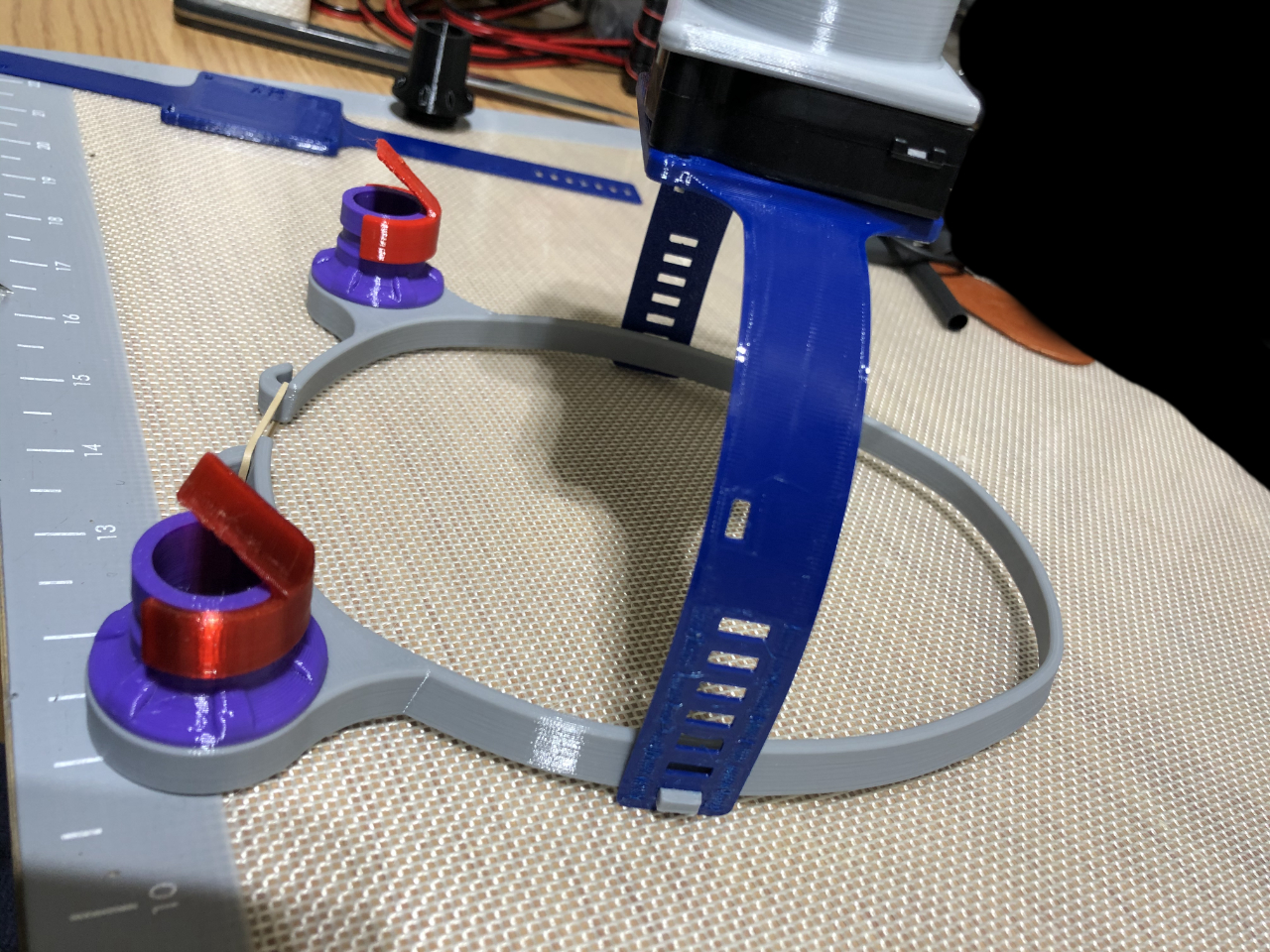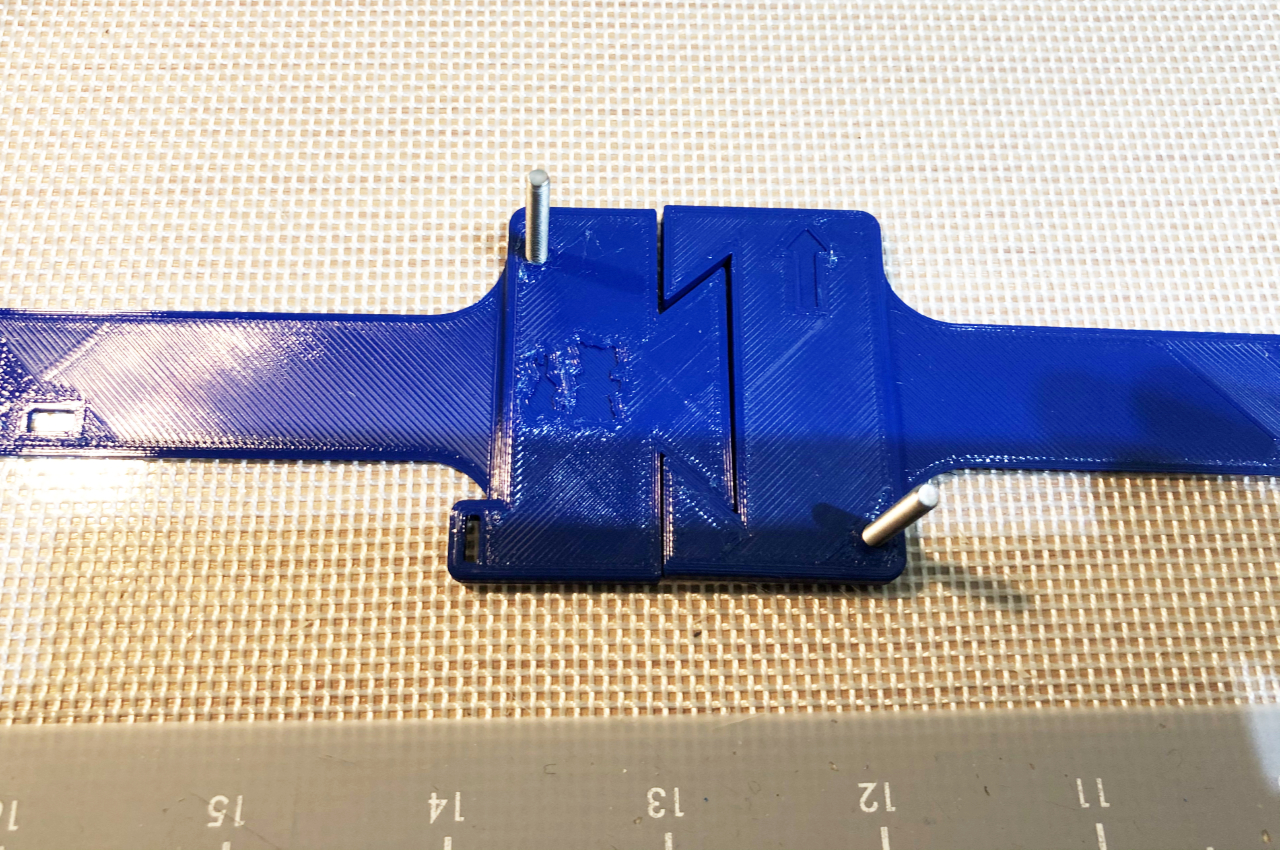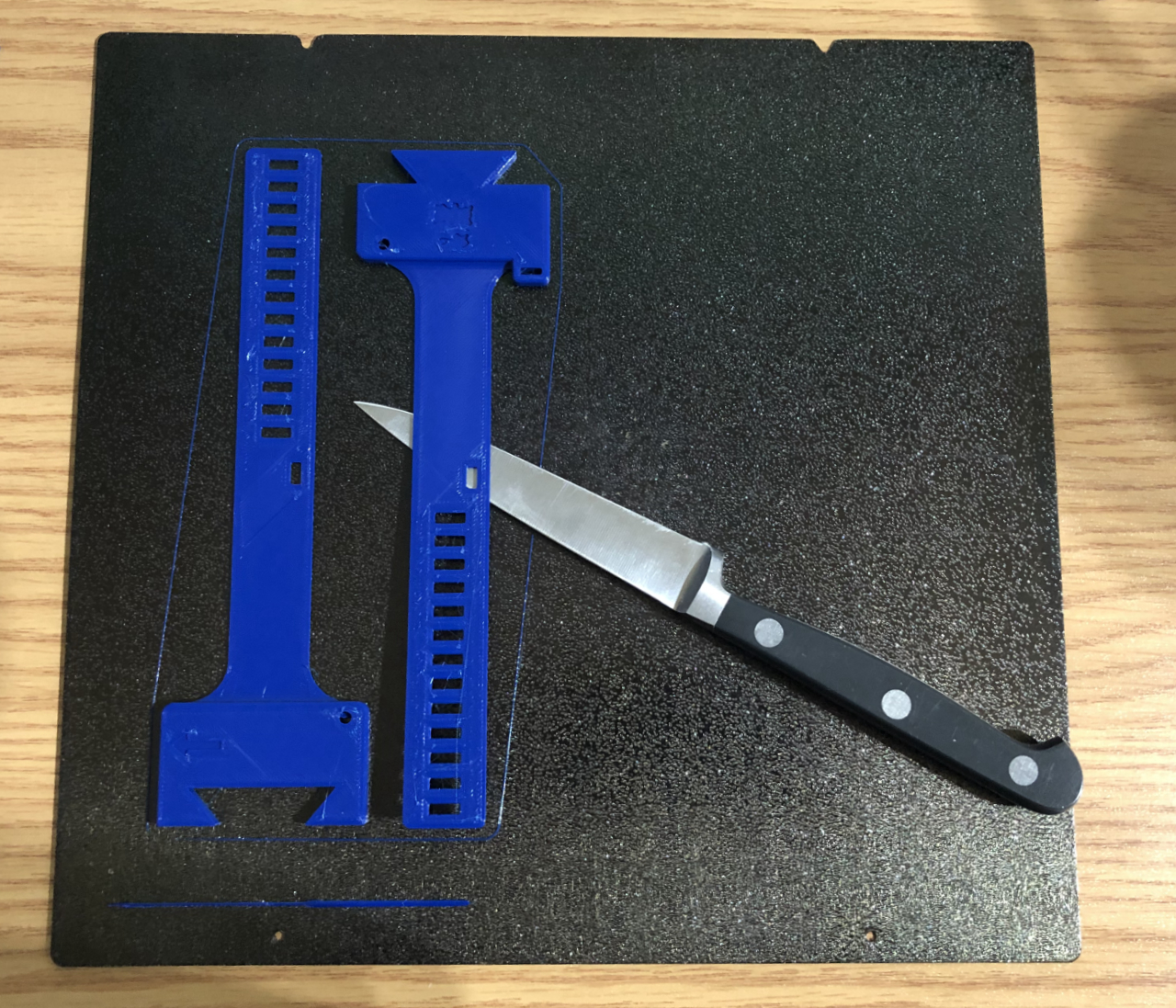RE: COVID-19 Printable PAPR (Powered Air Purifying Respirator)
Completely redesigned Halo to be adjustable size and moved blower fan to top of head. New configuration fits a wider user population. Three size ranges are supplied (small, wide, large). An elastic band at rear of halo lets you set size and tension. Fan mount snaps into place and is also adjustable for head size.
Long duration wear comfort
Completed four hours of continual wear with the new flex version in fan PAPR configuration. Comfort level is much improved. Basically can wear indefinitely with revised design. Worked on the 3D printer, did CAD work, walked around, and did stairs all without difficulty. Fogging is essentially gone with use of blower fan.
Work of breathing is easier than through an N95 mask.
Even OK configured with two viral filters as expiratory vents. That gives total isolation both inhaled and expired. So, no additional mask is needed inside PAPR when working in a sterile environment.
RE: COVID-19 Printable PAPR (Powered Air Purifying Respirator)
Changed the description on the dozuki page to more explicitly explain why a PAPR instead of a mask. It now reads....
-----------
This is not a mask, but a PAPR (Powered Air Purifying Respirator). It addresses issues that plague not only DIY masks but also commercial N95 masks.
Perfect face fit requirement: A mask which does not form a perfect facial seal is of no use for protection against aerosolized threat. Some simply cannot use an N95 mask because they can never pass fit testing for leaks.
- Bunny Science Halo PAPR isolates user via positive pressure instead hoping for a perfect seal.
Filter material must be effective against viral threat and be safe to breath through. The filter material must also be mounted without any leaks around the material.
- Halo PAPR uses commonly available (in hospitals) high grade viral filters. These are FDA approved and provide higher than N95 filtering.
Instructional Video Now Available
Uploaded an instructional video with theory, assembly and usage information
RE: COVID-19 Printable PAPR (Powered Air Purifying Respirator)
I've been sewing Tyvek PAPR hoods and have converted them to work with both the 3M Air-Mate and Versaflo. I was using HME vent vilters with my own 12v blowers, but after reading manufacturer test specs, they were only tested at 30 liters per minute for 1 minute. MUCH lower flow rate than you are using. So I wonder how long the inline filters you are using are effective at their rating for? Anyone have any insight?
RE: COVID-19 Printable PAPR (Powered Air Purifying Respirator)
I'm below, not above 30 l/min. The blower I'm using can't push anywhere near 30 liters/min with the back pressure I'm generating. I'm only seeing about 20 l/min max.
More importantly, I think there is something wrong with your 30 l/min max tested flow rate. The lowest recommended rate the filter is supposed to mechanically tolerate in an anesthetic circuit is 50 l/min. Most of the Draeger filters are speced at 30, 60, 90 l/min for their flow resistance. I can't find one that is limited to 30.
RE: COVID-19 Printable PAPR (Powered Air Purifying Respirator)
@guy-k2
OK, thanks. Asking because PAPR loose fitting hoods require 170 lpm. I am a flight nurse in Alaska doing 2-4 hour transports of these patients in small jets and turbo prop aircraft. I set up this PAPR hood I made with our HME filter from our Hamilton T-1 ventilator and the specs were pulled from a discussion with the manufacturer.
It looks like your circuit filter is much more robust. What brand is it?
Thanks again for your innovation.
RE: COVID-19 Printable PAPR (Powered Air Purifying Respirator)
Do the calculation for working flow's backwards. We ventilate a large male routinely through an HMEF with TV 1000 ml x 12 . Sometimes even higher depending on their size. That's 12 l/min but it is pushed through at I/E ratio of 1:3. So, inspiratory flow rate that we are doing is about three times that or 36 l/min. Do a laparoscopy and we're running rates like 18 bpm or about 54 l/min flow across the filters during inspiration. There's something awry with your 30 l/min max.
RE: COVID-19 Printable PAPR (Powered Air Purifying Respirator)
@guy-k2
Yes, I'm not saying 30 lpm max, that's just what they tested it at. I LOVE your idea and utilized the same process but with a hood, and it worked great. I was hoping to send one of my PAPR blower designs to Nelson Labs to have it formally tested for particle penetration.
RE: COVID-19 Printable PAPR (Powered Air Purifying Respirator)
Hi Guy,
Love the design, thanks for all the hard work you put into this! I have been trying to cobble together some safe simple solutions for a friend who is an ER PA. I was curious if your design could work with viral cpap filters that are more easily available. I was not sure if there was a substantial airflow / diameter distance that would throw the pressure off. Also was not sure if the viral rating was quite as high as what you are using.
Thanks!
RE: COVID-19 Printable PAPR (Powered Air Purifying Respirator)
Love to give you a better answer, but I have zero experience with CPAP filters.
I only work with ventilators.
RE: COVID-19 Printable PAPR (Powered Air Purifying Respirator)
@guy-k2
No problem! Thanks again!
RE: COVID-19 Printable PAPR (Powered Air Purifying Respirator)
Already deployed some of the oxygen configured Halo PAPR's last week for some of my partner docs. Will convert those to fan driven units this week. One of our employee's husband has offered to help print some parts. My two Prusa's are just not enough capacity.
RE: COVID-19 Printable PAPR (Powered Air Purifying Respirator)
Just ran across your note...
loose fitting hoods require 170 lpm
That explains the flow difference needs between what you're doing and this project.
This system is a tight fit system. Its required flow rate is much lower. My little blower fan can only static pressure 200 pas at ZERO flow. It does enough to clear CO2 and water vapor, but would not be anywhere near having enough flow to create isolation with a loose fit hood.
RE: COVID-19 Printable PAPR (Powered Air Purifying Respirator)
@nordicweiss, one off topic. I hope they are letting you put viral filters on your AmbuBags. Otherwise, most of those will just blast virus aerosol with every cycle.
RE: COVID-19 Printable PAPR (Powered Air Purifying Respirator)
@guy-k2
We are doing that. We use Glidescope Ranger, also now flying patients in negative pressure Isopod.
RE: COVID-19 Printable PAPR (Powered Air Purifying Respirator)
Excellent. Thumbs up on the Isopod and glidescope too. We're evacuating the OR and using self-constructed negative pressure hoods around our patients for intubation and extubation. Still debating safety of LMA's. Weird balancing viral risk to care givers vs airway injury risk for patients.
RE: COVID-19 Printable PAPR (Powered Air Purifying Respirator)
Deployed nine BS Halo PAPR's to some of my anesthesia partner docs at Overlake Hospital in Bellevue WA.
Was a bit of a push printing up and assembling them myself, but definitely was worth doing. Especially delighted to receive his was my partner who is not just an anesthesiologist but also ICU doc.
On a positive note, we're going to get some printing help from 3D Printing discord. That will take off some production pressure. The bag penetrators and valve deflector bits really should be single use. Just wasn't any way for me to print enough of those myself.
RE: COVID-19 Printable PAPR (Powered Air Purifying Respirator)
Not pretty market packaging, but they were definite goody bags.
Time to explain and get people caught back up.
What is a PAPR?
Powered Air Purifying Respirator - Is an enclosed air chamber around your face or entire head that provides clean breathing air via a fan powered filtering unit. PAPR's are much more comfortable than a face mask and (unlike a mask) function properly without requiring a continuously perfect face seal.
Why Don't we Always Use PAPR's?
PAPR's are orders of magnitude more expensive compared to an N95 mask. Facilities cannot afford to supply PAPR's to everyone. N95 + face shield is an economical way of providing fairly good protection without going broke. PAPR's are the preferred protection doing high contamination risk procedures, but there are not enough to use during other circumstances.
What are Some Advantages of a PAPR over a Mask?
PAPR's create isolation via positive pressure rather than a tight seal. They maintain isolation even if fit is not perfect. Face masks must maintain an absolutely perfect seal against the face. Reliance on seal PERFECTION means even face shape or a little stubble defeats the mask. Any leak, whether around the mask periphery, through porous 3D print shell, or around make shift filter material defeats the mask.
Maintaining a good seal with a mask often means more band tension. After several hours of usage, bruising or skin damage can occur with tight bands. PAPR's don't use a tight seal nor do they need high band tension.
Mask force the user to use lung power to draw air through filter. PAPR's do that fatiguing work for the user.
Why Build a PAPR instead of Printing 3D Mask?
As mentioned earlier, masks depend on remaining sealed even during negative pressure inspiration. PAPR's use positive pressure in the vast majority of the structure. Only a tiny portion is at negative pressure. It is within the capability of FDM to create a sufficiently tight PAPR. A sufficiently tight mask is much more challenging.
What are a Dangers of a PAPR?
PAPR's must have good filtering. All the air must be properly filtered. The BS Halo PAPR uses a known and approved vial filter. As a tight fit PAPR, it keeps minute flow low so the filter can easily tolerate the flow rate.
Flow rate must however be high enough to clear expired CO2. Fail to do that and the use will soon suffer hypercapnea. Careful measurement and monitoring of CO2 and respiratory rate must be performed when designing and balancing PAPR airflow.








